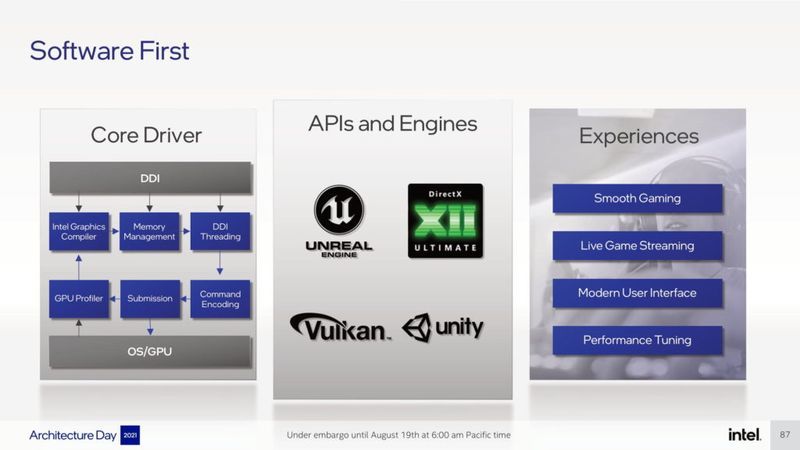The new Intel XeSS technology, the enterprise version of NVIDIA’s DLSS technology, was recently unveiled. Karthik Vaidyanathan gave an interview to Wccftech where he revealed more details about the technology.
New details about Intel XeSS technology, which was officially unveiled a few days ago
This new Intel technology aims to compete with NVIDIA’s DLSS technology. Intel’s XeSS technology will be available from day one for all existing GPUs, making it available to all users. In addition, this technology does not need to be trained with games, which is already the case with NVIDIA DLSS 2.0. It creates a unified library that supports different games at the same time.
Vaidyanathan pointed out that no training material was used in the official XeSS demo:
You have seen the demo, and I can say that XeSS has never seen that demo. He was never trained in that demo. All the content you saw in that scene was not used as part of our training process.
He emphasized that XeSS technology will have wider adoption than the NVIDIA equivalent. He pointed out that there will be two variants of this technology. The first is based on XMX acceleration, which is only available on Intel Arc GPUs. In addition, there will be a DP4a-based version with spatial dot product acceleration compatible with GPUs that support Microsoft Shader Model 6.4, including NVIDIA Pascal and Turing GPUs, as well as AMD RDNA and RDNA2.
Currently, neither NVIDIA nor AMD have publicly stated any intention to support XeSS technology. This is understandable since this new technology is not yet on the market and both companies have their own technologies in this area. It should be noted that Intel has shown interest in AMD’s FSR technology even before the technology was released to see how it would work.
Note that the DP4a-based XeSS version requires a longer frame processing time. Still, it is significantly less than processing a native 4K resolution frame.
Karthik pointed out that the DP4a version and the XMX version of Intel XeSS technology will work with the same API. This means that the integration of this technology, regardless of the variant chosen, is the same. So the game engine will have the same interface under which the platform version chosen by the developer is located. We have the same interface and library, but two different ways to use it, which makes it easier for developers.
It should be noted that XeSS XMX will not use the Tensor Cores of NVIDIA graphics cards. Indeed, as long as there is no standardization, it is very expensive to develop a solution that runs on all types of hardware. DP4a is able to support all types of modern hardware, which makes the work much easier.
He clarified that there is currently no intention to implement RP16/32. At launch, AMD FSR technology offered FP32 support for older GPUs, so this technology could be used on a wide range of graphics cards. These instructions are not array-based, like the Tensor Cores or XMX most commonly used for AI algorithms.
Vaidyanathan points out that like FSR and DLSS, this new Intel XeSS technology will have multiple quality modes. This allows flexibility for developers and players alike. The idea is to take full advantage of all GPUs regardless of their performance through manual or automatic optimization.
